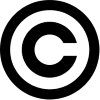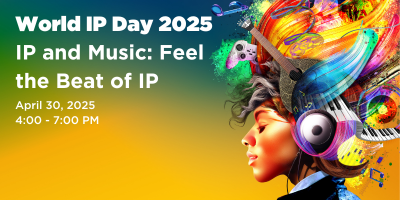Quarterly Journal Volume 53, Issue 1
In This Section
The Quarterly Journal is dedicated to presenting materials relating to intellectual property matters and is published four times per year. Editorial Board members (all of whom are lawyers) are selected based upon demonstrated interest and experience, and student staff members are selected from the students of the GWU Law School.
 QJ 53.1 - As Rare As Hen’s Teeth?: The Pervasive Dysfunctionality of IP Recording Systems
QJ 53.1 - As Rare As Hen’s Teeth?: The Pervasive Dysfunctionality of IP Recording Systems
Ronald Mann
AS RARE AS HEN’S TEETH?: THE PERVASIVE DYSFUNCTIONALITY OF IP RECORDING SYSTEMS
This Article considers the dysfunctional nature of the existing systems for recording notice of security interests in patents and copyrights. It starts by discussing how the relevant recording statutes came into being, deriving in the 19th century from real-property recording statutes, but frozen at that stage. It then considers the leading cases for assessing priority of security interests in copyrights and patents, and then discusses practical and interpretive problems with those systems as those cases leave them. The Article closes by suggesting reforms that could be implemented by the courts in some cases, but by Congress in most.
 QJ 53.1 - How to Resolve Double Patenting: Recognize It Is An Archaic Legal Doctrine That Was Effectively Eliminated for AIA Patents
QJ 53.1 - How to Resolve Double Patenting: Recognize It Is An Archaic Legal Doctrine That Was Effectively Eliminated for AIA Patents
Brad D. Pedersen
The U.S. Patent and Trademark Office (USPTO) improperly attempted to expand the judicially created doctrine of double patenting through proposed rule changes in May 2024. These changes sought to simplify challenges to drug-related patent thickets by requiring broad concessions in terminal disclaimers, potentially invalidating entire patent families if a single claim was deemed invalid. Fortunately, the proposed rule changes were withdrawn. This article revisits the legal and policy reasons for why the proposed rules were improper for pre-AIA patents and statutorily unauthorized for AIA patents. It advocates for alternative approaches that eliminate doubling patenting for AIA patents and encourage enhanced examination and procedural reforms for all continuations applications which would better serve the patent system.
 QJ 53.1 - The Eminem Show(Down): Legal Face-Off Among Music Publishers, Streaming Services, and the Fifth Amendment
QJ 53.1 - The Eminem Show(Down): Legal Face-Off Among Music Publishers, Streaming Services, and the Fifth Amendment
Hunter Greenberg
Vested in copyright owners is the right to file an infringement suit when an unlicensed party infringes on the copyright owner’s original work of authorship. However, an amendment to the Copyright Act of 1976 removes this right from copyright owners of musical works (predominantly songwriters and music publishers) when a streaming service infringes upon their music. The problem with this amended provision is that it possesses characteristics suggesting it may be a regulatory taking under the Fifth Amendment. By applying the ad hoc takings analysis to this Limitation on Liability provision, this Note concludes that the provision in question can constitute a regulatory taking. Then, several recommendations are suggested to remedy this finding.
 QJ 53.1 - Boureé-ing Between Copyrighted Choreography and Uncopyrighted Dance: Where Do We Draw the Line?
QJ 53.1 - Boureé-ing Between Copyrighted Choreography and Uncopyrighted Dance: Where Do We Draw the Line?
Danielle Dittmar Peraza
BOUREÉ-ING BETWEEN COPYRIGHTED CHOREOGRAPHY AND UNCOPYRIGHTED DANCE: WHERE DO WE DRAW THE LINE?
While copyright law purports to protect choreography, choreographers and legal scholars face problems. Choreographers have rights pertinent to public performance and the public display of their work, but the law provides no helpful guidance when distinguishing between mere inspiration and outright copying. Choreography in copyright law has remained a largely undefined area. Very few courts have considered the scope of copyright protections for choreographic work. This Note proposes rethinking how we define “choreographic work” and moving towards a broader definition of choreography so that courts and parties may better distinguish protected elements and expression such that alleged defendants cannot hide behind the excuse that their copying was mere “inspiration.”
 QJ 53.1 - Rethinking the Obviousness Inquiry In the Age of Generative AI
QJ 53.1 - Rethinking the Obviousness Inquiry In the Age of Generative AI
Jaemin Sung
RETHINKING THE OBVIOUSNESS INQUIRY IN THE AGE OF GENERATIVE AI
Human inventors are increasingly employing artificial intelligence in the inventive process. With the availability of generative AI, which can create new contents in a manner that exceeds human capabilities, inventors have the best tools at their disposal. However, in evaluating the patentability of AI-assisted inventions, the traditional obviousness inquiry under Graham does not adequately capture the extent of which a skilled person in the art can judge the obviousness of such inventions. This Note thus addresses the impact of generative AI on the level of ordinary skill in the art and the person having such skill in the art. It also discusses the need for a separate disclosure requirement for patent applications that claim AI-assisted inventions. Next, it proposes a set of criteria that augments the obviousness inquiry into AI-assisted inventions. Finally, it applies the proposed criteria to evaluating the obviousness of a controversial AI-assisted invention that was once rejected by the USPTO for listing AI as its sole inventor.
Upcoming Events
-
 World IP Day 2025
World IP Day 2025
April 30, 2025 4:00 PM to 7:00 PM
Join AIPLA and partner organizations on April 30 in Washington, DC, for a special three-hour program to celebrate World Intellectual Property Day 2025. This annual international event is an opportunity to learn about the role that intellectual property (IP) rights play in encouraging innovation and creativity. The theme of this year’s celebration is “IP and Music: Feel the Beat of IP.” -
 2025 Spring Meeting - Minneapolis, MN
2025 Spring Meeting - Minneapolis, MN
May 13 to 15, 2025
We’re excited to welcome you to the 2025 AIPLA Spring Meeting, where innovation, technology, and intellectual property come together to shape the future. Minneapolis is ready for your ideas, energy, and passion for IP! -
 AIPLA CLE Webinar: Common Pitfalls in Negotiating Academic and Commercial Technology Transfer Agreements
AIPLA CLE Webinar: Common Pitfalls in Negotiating Academic and Commercial Technology Transfer Agreements
May 27, 2025 12:30 PM to 2:00 PM | Up to 90 Mins CLE Pending
Do you receive questions from clients regarding licensing of intellectual property from educational institutions? Not comfortable providing answers? Educational institutions can have unique requirements, concerns, and incentives that are not present for commercial entities. Knowing these requirements and appreciating the unique concerns of educational institutions may help reach an earlier consensus on licensing terms and overcome common pitfalls experienced in such licensing negotiations. Take this rare opportunity to hear from experts in academic-corporate technology transfer and prepare yourself and your clients to address the unique challenges of licensing technology from educational institutions. -
AIPLA 2025 Annual Meeting
October 30 to November 1, 2025
Join us as we bring IP professionals together to learn and connect. More information coming soon! The 2025 Annual meeting will take place at the Westin Washington, DC, Downtown. Leadership Meetings on Wednesday, October 29. Programming scheduled October 30 - November 1.

